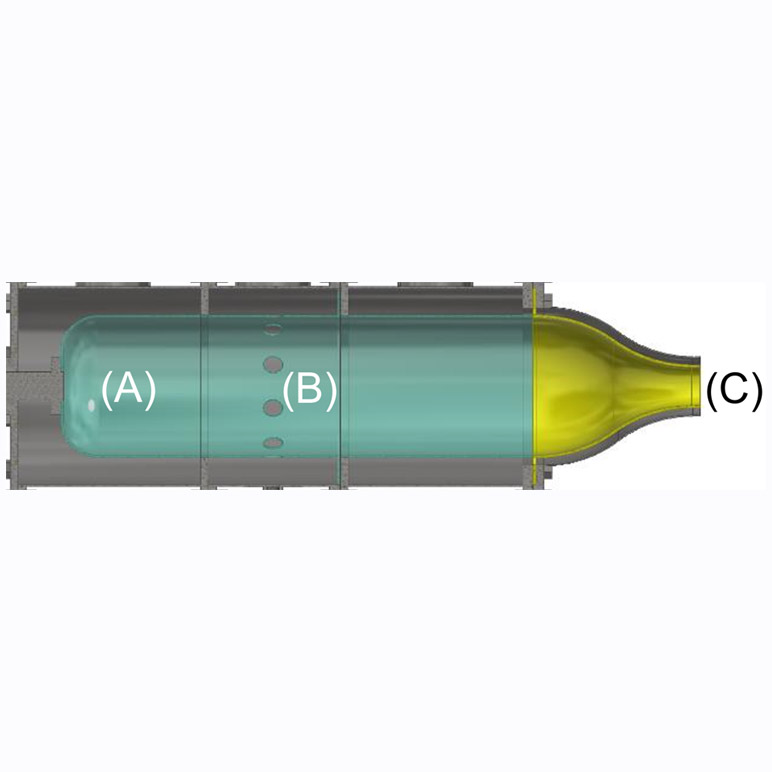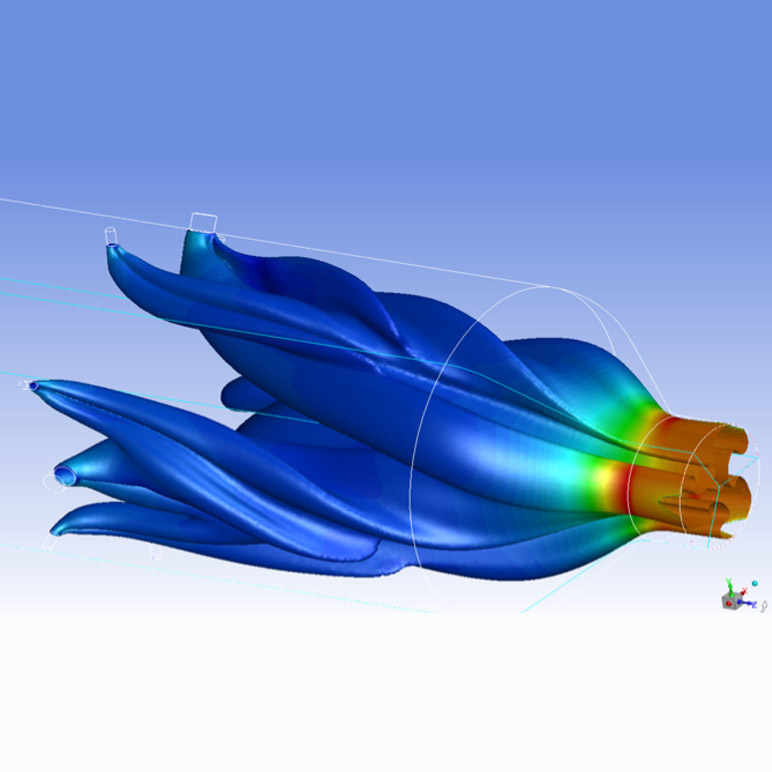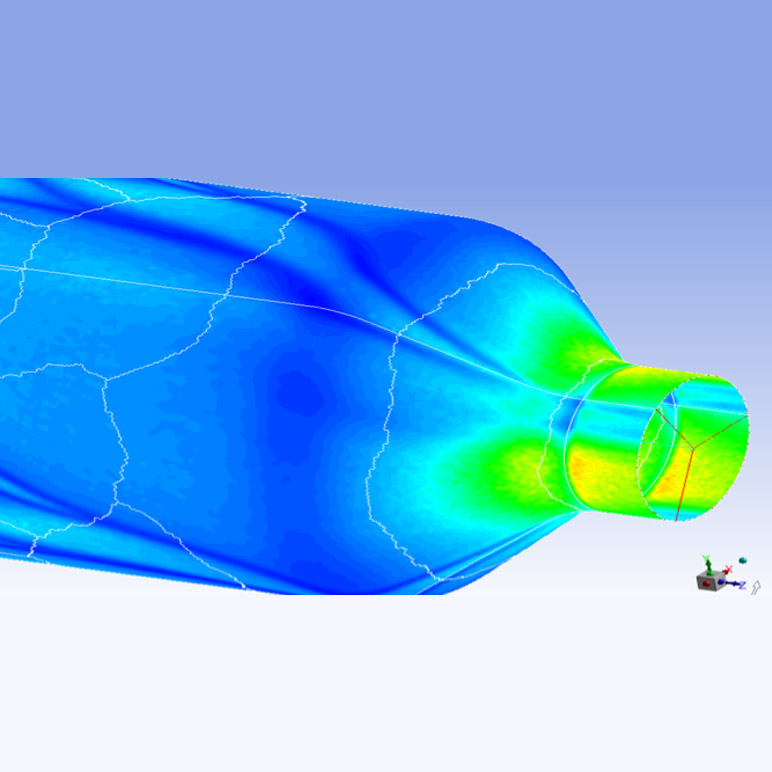Development of a high-temperature test rig
A consortium was requested to realize a design proposal for a high-temperature test rig for gas turbines and jet engines. Mateq Process executed the CFD calculations to the hot gas generator of this setup, and collaborated in the optimization and validation of the design to the required specifications.
In the development of high-temperature components for gas turbines and rocket engines, these components need to be validated for their performance at very high temperatures and to rapid and large changes in temperature. Demands for these components are strict, and component testing is an essential part of their development and approval. For this purpose, specialized setups are realized, which can realize hot gas jets of over 1500 C. and nozzle exit velocities close to the local speed of sound.
A consortium, where Mateq Process was one of the partners, was requested to realize a design for such a setup, and to validate and optimize the design using Computational Fluid Dynamics (CFD).
One of the challenges of the project was the complex physics of the design. With combustion, heat transfer and low as well as high local velocities in a single physical domain, a specific challenge was setting up the CFD validation. This was exacerbated by the demand that both the internal flow inside the hot gas generator, as well as entrainment of external air into the jet flow had to be taken into account.
The main purpose of this part of the project was to realize and optimize a basic design. Therefore it was chosen to model the internal flow, up to the exit nozzle, and the external flow out of the nozzle including the ambient air entrainment, separately.
The basic design consists of a hot gas flow, generated by a model gas turbine combustor, and to realize the desired temperature by adding dilution air downstream of the gas turbine combustor flame. See also Figure 1. Subsequently, the design was assessed using CFD simulations.



A complex assignment – the development of a hot-gas generator for a high-temperature – high-velocity test setup – was split into manageable parts. Mateq Process has significantly contributed to realizing and optimizing the final basic design, and has shown that the design can meet the requirements.
The combination of knowledge and know-how into gas turbine combustor flows, atmospheric jet entrainment and heat and mass transfer in these components, were important added values in this project.



Combustion2 is een joint venture van Mateq Process en SUSCOMB.
Combustion2 levert verbrandingsapparatuur voor circulaire energiesystemen.

Contact data
+31(0)6 20 66 26 75
info@mateqprocess.com
terms of delivery
privacy (in Dutch)
cookiebeleid
©Mateq Process